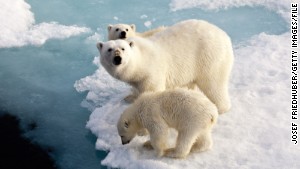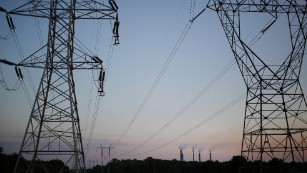It was less than two years ago that the Intergovernmental Panel on Climate Change released its all-encompassing assessment on the current state of climate change research and made projections for the future climate of our planet.
According to the latest from NASA, however, the projections the panel made for a rise in global sea levels of 1 to 3 feet may already be outdated.
According to Steven Nerem of the University of Colorado, we are “locked into at least 3 feet of sea level rise, and probably more.”
It was less than two years ago that the  Intergovernmental Panel on Climate Change released its all-encompassing assessment on the current state of climate change research and made projections for the future climate of our planet.
Intergovernmental Panel on Climate Change released its all-encompassing assessment on the current state of climate change research and made projections for the future climate of our planet.
According to the latest from NASA, however, the projections the panel made for a rise in global sea levels of 1 to 3 feet may already be outdated.
According to Steven Nerem of the University of Colorado, we are “locked into at least 3 feet of sea level rise, and probably more.”
Even NASA is finding some of its critical infrastructure threatened by the rising seas.
What’s behind the rising seas?
There are three main causes for rising sea levels: The expansion of warmer ocean water, melting mountain glaciers, and ice loss from the massive Greenland and Antarctic ice sheets.
The latter of those causes has scientists at NASA the most concerned, and is a key area of focus in the “intensive research effort” the agency announced on Wednesday.
One of those projects, called Oceans Melting Greenland, which goes by the intentional acronym of OMG (ironic, right?) will spend the next six years trying to determine how the Greenland Ice Sheet is contributing to sea level rise.
he Jakobshavn Glacier, the fastest moving glacier in Greenland, recently broke off a piece of ice large enough to cover the island of Manhattan in ice roughly 1,000 feet thick, according to the European Space Agency.
The glacier d rains more ice-melt from Greenland into the ocean and contributes more to sea level rise than any other feature in the Northern Hemisphere.
rains more ice-melt from Greenland into the ocean and contributes more to sea level rise than any other feature in the Northern Hemisphere.
If the entire ice sheet in Greenland melted completely, global sea levels would rise around 20 feet, and while this total loss would likely take many centuries to occur, sea levels would rise “as much as 10 feet in a century or two,” according to NASA scientist and ice expert Tom Wagner.
Many climate experts say temperatures are rising faster than at any point in our known history and that it is largely because of human activities such as the burning of fossil fuels.
NASA’s increased focus on climate change and rising sea levels is not just about future projections. The agency also is demonstrating the past change in a first-of-its-kind visualization of the entire 23-year satellite record of global sea levels.
The agency is using satellite instruments so accurate that NASA Earth Science Division Director Mike Freilich said that if they were “mounted on a jetliner flying at 40,000 feet, they could detect the bump caused by a dime lying flat on the ground.”
The data gathered reveals that sea levels have already risen nearly 3 inches since 1992. If that doesn’t sound like much, remember that a good rule of thumb is: For every inch of sea level rise, you see 100 inches of run-up inland on the coast.
But the rise is not uniform. Some places have seen sea levels rise more than 9 inches, while others, like the U.S. West Coast, have actually seen slight decreases in sea level.
But before you sell your summer home on Long Island and move to Southern California, you should know that this decrease in sea level was likely temporary. Experts say it was the result of cooler phase in a natural cycle with an unwieldy name: Pacific Decadal Oscillation.
That cycle recently switched to a warmer one (giving rise to something called the blob). According to NASA, the West Coast may now start seeing a faster rise in sea level and more than make up for the deficit it has seen over the last 20 years.
As reported by CNN
